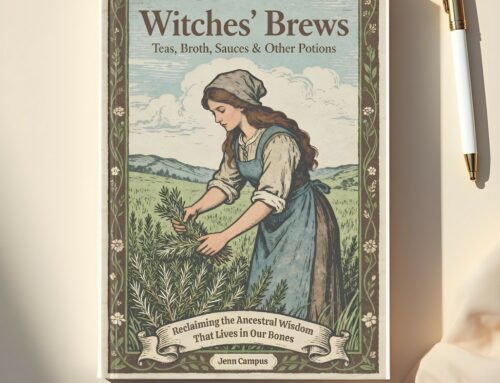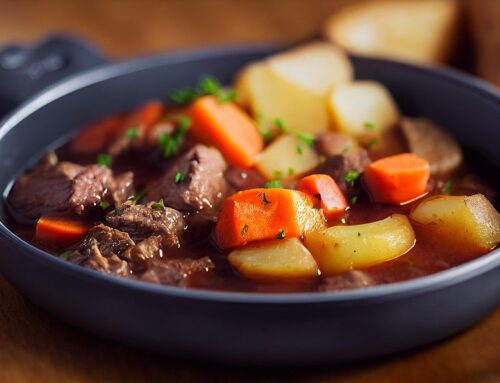
Summer Solstice, also called Midsummer is an occasion to bake a beautiful offering to the season with local produce. I love making round things to celebrate solstices, in honor of the sun, and pancakes are a perfect choice. They are easy, delicious, and so versatile.
But is my pancake Dutch, Finnish or German? I’ve seen this style of pancake referred to all three. My pancake has an identity crisis, so let’s look into why it has all of these names, and why you should make some this summer.
FOOD, A GATEWAY TO CULTURE
I love to make cultural connections in food preparation. It is the anthropologist in me. I am not satisfied with just eating a deliciously prepared recipe. Whether it is a unique dish or a common staple, I want to understand its origins, how it evolved, and what makes it shine.
Every food has its own history, its own story of conception, and origin. That is why I love historic recipes and culinary anthropology. I like to imagine the first person who paired certain available ingredients and created what today remains a staple classic.
To learn where food comes from is to learn a lot about the place, and people that created it. What resources were common and available? How did people prepare meals and in what vessels? What kind of crops or foods are in their environment? This is the line of questions and their answers that endlessly fascinates me and allows me to take my own culinary journey.
In terms of ancestral foods, you can learn so much about your ancestry by the foods of that culture – they are just a window to the rest of it, a gateway. Interestingly enough I have both German and Finnish ancestry, and so this recipe covers all the bases.
PANCAKE LOVE
By now, if you are a regular reader of this blog, you know about my love for pancakes, be they be medieval and made of chickpeas or an American twist on the Sardinian holy trinity. Pancakes have been a Sunday morning tradition in our family for over a decade.
This is one of my favorite types of pancakes which is a cake that you make in a cast iron pan…a pan-cake. Yet I have heard this particular pan-cake referred to in several different ways: Dutch, Finnish, and German. But as far as I can see, they all have the same basic recipe, flour milk and lots of eggs. So which is it? How did they get these very specific place names?
Wikipedia says the “Dutch Baby” and “German Pancake” are one and the same, and similar in texture and taste to a Yorkshire Pudding.
The recipe derived from the German Apfelpfannkuchen – a type of apple pancake. It then goes on to say that the moniker “Dutch Baby” comes from the Pennsylvania Dutch, who aren’t actually Dutch at all, but German-American immigrants, where “Dutch” is a corruption of the German autonym “Deutsch”.
The Finnish Pancake, called Pannukakku in Finnish, has considerably less information about its origin. One blog post claims that what makes it Finnish is “that they are pancaked in the oven rather than the stovetop”. Yet, we know that the Dutch/German version is also baked in the oven. So I searched and searched and yet could not find any clarifying information.
There is not much history between Finland and Germany before the Second World War that I can discover in a quick search, so it is unlikely that one learned the recipe from the other. They must have therefore developed independently from one another.
Regardless of their official name, these pancakes are really delicious, and since it is the beginning of stone fruit season, I made one with fresh apricots to celebrate Solstice and Father’s Day. In Finland, they are typically topped with berries and whipped cream and served around the summer solstice. I like to make them on the summer solstice, too, because the shape is a circle like the sun, and the apricots are not only round, too, but the color of that glowing globe of life-giving light. I have also made these pancakes in the past topped with sautéed apples, as a nod to the German Apfelpfannkuchen.
Although the Summer Solstice has passed, we still have 3 months left in the season, so its the perfect time to enjoy this delicious treat!
Dutch Baby with Apricots
Serves: 8
INGREDIENTS:
4 small apricots, halved
2 tablespoons unsalted butter
1/2 cup cream (you can also use whole milk)
4 large eggs
2 tablespoons granulated sugar
1 teaspoon vanilla extract
1/2 cup all-purpose flour
1/2 teaspoon fine salt
1 teaspoon cinnamon
METHOD:
1. Preheat the oven to 400 F
2. Heat a cast-iron skillet over medium-high heat and melt the butter.
3. Sauteé the apricots in the butter.
4. Meanwhile mix the cream, eggs, sugar, and vanilla until well incorporated.
5. Then add the flour, salt, and cinnamon, and mix well.
6. Add the batter to the skillet, and swirl making sure to cover the entire pan.
6. Place the skillet in the oven.
7. Bake until the Dutch baby is puffed, lightly browned across the top, and darker brown on the sides and edges, about 15 to 20 minutes.
8. Now you can sprinkle it with powdered sugar, and cut into wedges.






Leave a Reply